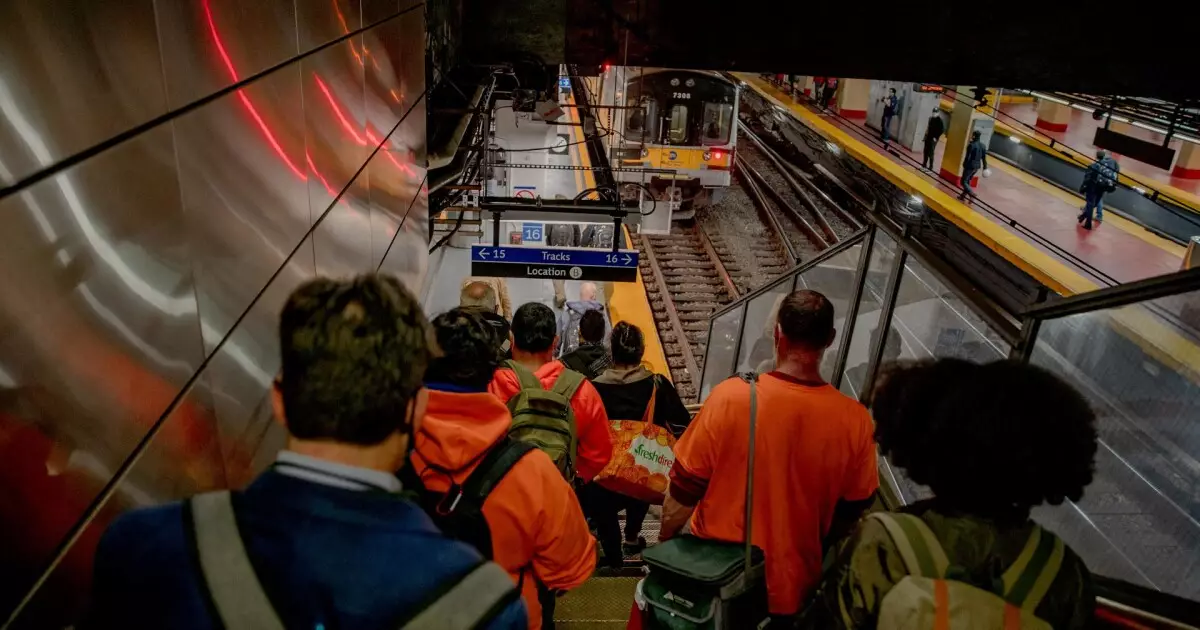The recent shake-up regarding the revitalization of New York’s Pennsylvania Station represents a pivotal moment in urban infrastructure management. The decision by the Trump administration to supplant the Metropolitan Transportation Authority (MTA) with Amtrak as the primary steward of the $7 billion makeover raises a host of questions about efficacy, governance, and the future of public transportation in New York City. Secretary of Transportation Sean Duffy’s announcement indicates a reaction not merely to logistical issues but to a broader narrative around accountability and efficiency within the realms of public spending.
Donald Trump’s intervention in this project signals a decisive shift in governance style that prioritizes responsibility and outcomes over bureaucratic inertia. Hochul’s commendation of this move, a stark contrast to her predecessor’s paradoxical approach, entails that state officials have recognized the inefficiencies characteristic of the MTA. Transforming Penn Station into a modern transit hub is not just about aesthetics; it symbolizes a commitment to serve the people better—a commitment that has often faltered under the weight of institutional red tape.
The Price of Inefficiency
The switch from the MTA to Amtrak isn’t merely a power play; it reflects a pressing need to rectify years of mismanagement and opaque spending practices. Duffy’s dissatisfaction with the agency’s inefficiencies underscores the fundamental truth: taxpayers deserve tangible results for their money. Cutting the federal grant allocated to the project, ostensibly to save $120 million, could be seen as an exertion of prudent fiscal policy. However, it raises concerns over whether such a reduction will inhibit the project’s potential or enhance accountability.
Under the MTA’s watch, dubious financial decisions have plagued public transport systems across the nation, leading to a distrust that often alienates citizens from the very institutions designed to serve them. A lack of transparency, coupled with an alarming frequency of budget overruns, positions the MTA as a cautionary tale of how not to handle public infrastructure. Citizens often feel as if they are watching wheels turn without results—a reflection of governance not just in New York, but as a macrocosm of a wider national issue.
The Broader Political Implications
The unfolding drama around the Penn Station project is situated within a larger narrative of political contention between the Trump administration and New York officials, particularly concerning the controversial congestion pricing program. The MTA’s obstinacy in resisting the federal government’s directives exemplifies a principled stand on maintaining local control over transit systems, yet it also signals a reluctance to embrace the need for recalibration in policies that unnecessarily burden New Yorkers.
Herein lies a paradox: while local pride in governance is laudable, it must also yield to pragmatism that seeks to rectify inefficiencies. Duffy’s insistence on accountability puts pressure not just on the MTA but also on city leaders like Hochul to transition from rhetoric to action. This could signify a new era where local governance intertwines more effectively with federal oversight, promising a collaborative model that prioritizes citizen well-being and operational effectiveness—a model that is sorely needed in modern governance.
Building a New Future
The vision articulated by Hochul for a transformed Penn Station—one that includes a single-level facility with enhanced amenities, commercial spaces, and mixed-income housing—represents a bold and necessary leap toward modern urban planning. If executed well, it could serve as a template for other cities grappling with similar infrastructural challenges. However, the path to realizing this vision must be underpinned by diligent oversight, clear communication, and a commitment to inclusivity that extends beyond mere functionality.
The push to create a seamless transit experience must acknowledge the daily lives of over one hundred million MTA customers. They are not just riders but stakeholders deeply intertwined with the fabric of New York City. Their experiences during the transition period will serve as critical indicators of success or failure. As custodians of public funds and public trust, both federal and state officials must navigate this complicated landscape with foresight, empathy, and unwavering commitment.
Overall, the Penn Station overhaul stands as not just an infrastructural reimagining but as a call to action for all involved. It encapsulates the delicate balancing act of federalism, civic responsibility, and the pressing need for a renewed vision in urban transportation.

